I’m a details guy. This is me geeking out on the details of the two weeks I spent hurrying the length of Scotland. In time I’ll write a more narrative, touchy-feely account of the trip, but for now it’s (mostly) just the stats.
Don’t like spreadsheets? Then maybe I can tempt you with this 81-second teaser instead:
In a Nutshell
In September 2020 I fast-hiked/slow-ran the 864 km Scottish National Trail in a new record of 14 days. It was the hardest thing I’ve ever done, but involved some of the most incredible experiences of my life. Those two weeks of bliss and suffering took months of preparation, so I’ve tried to paint the full picture of the before and during here.
Firstly, how was it?
It was incredibly tough. Not in terms of peak intensity – there was never a time when I seriously considered giving up – but in terms of cumulative physical and mental fatigue. Averaging 62 kilometres and 14+ hour days for two weeks took a heavy toll. Some nights I struggled to sleep because my legs ached so deeply, but they always surprised me by recovering just enough to keep going the following morning.
The hardest part was just getting moving. My alarm went off at 5am each morning, and each morning I had to choose to get out of the warmth of my sleeping bag, put my wet shoes back on and start walking, in the dark. I was constantly tempted to treat myself to a sleep-in as a reward for a long previous day, but I knew I had to make the most of every hour of daylight. I had to remind myself that any buffer I’d built up was for “future me”.
The time pressure of my ambitious schedule definitely took its toll mentally, with the added worries of trying to update friends and family, struggling to keep my phone charged and running frustratingly low on food a couple of times. But that’s all part of the adventure, and inevitable with my “high level” approach to the planning.
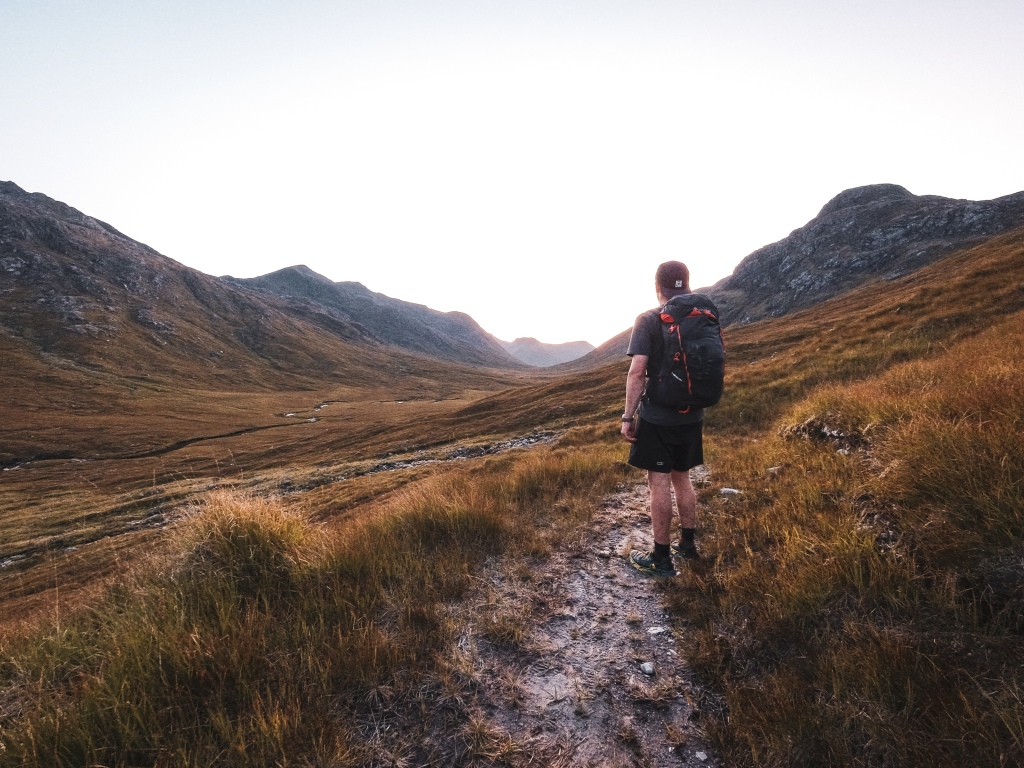
But it wasn’t all pain and suffering. I genuinely loved at least two-thirds of the trip, which meant a lot of good times. I walked through 14 incredible sunrises and 14 incredible sunsets. I saw many of Scotland’s most wild and beautiful places, albeit at an accelerated rate that was hard to fully process. Sure, I would’ve appreciated them more at a slower pace, but I wouldn’t have had the time to see many of these places at all otherwise. It was the big blow-out I needed after lockdown, blissfully unaware that 2020 still had a few surprises in store. I just wouldn’t want to do such aggressive trips too often.
Now, back to the beginning…
The Idea
I’m a New Zealander, and moved to Edinburgh in late 2019 looking for work and adventure. I first read about the Scottish National Trail at the start of 2020. An 864-kilometre highlight reel of Scotland’s most scenic hikes – it seemed like the perfect way to see the country while I’m living here. But it normally takes 5-6 weeks and I didn’t have that sort of time, so I forgot about it.
Then lockdown hit in March, various other trips got cancelled and I got fidgety. The idea crept back, I bought the guidebook and started tentatively experimenting with gear and training. Most importantly, I made a spreadsheet.
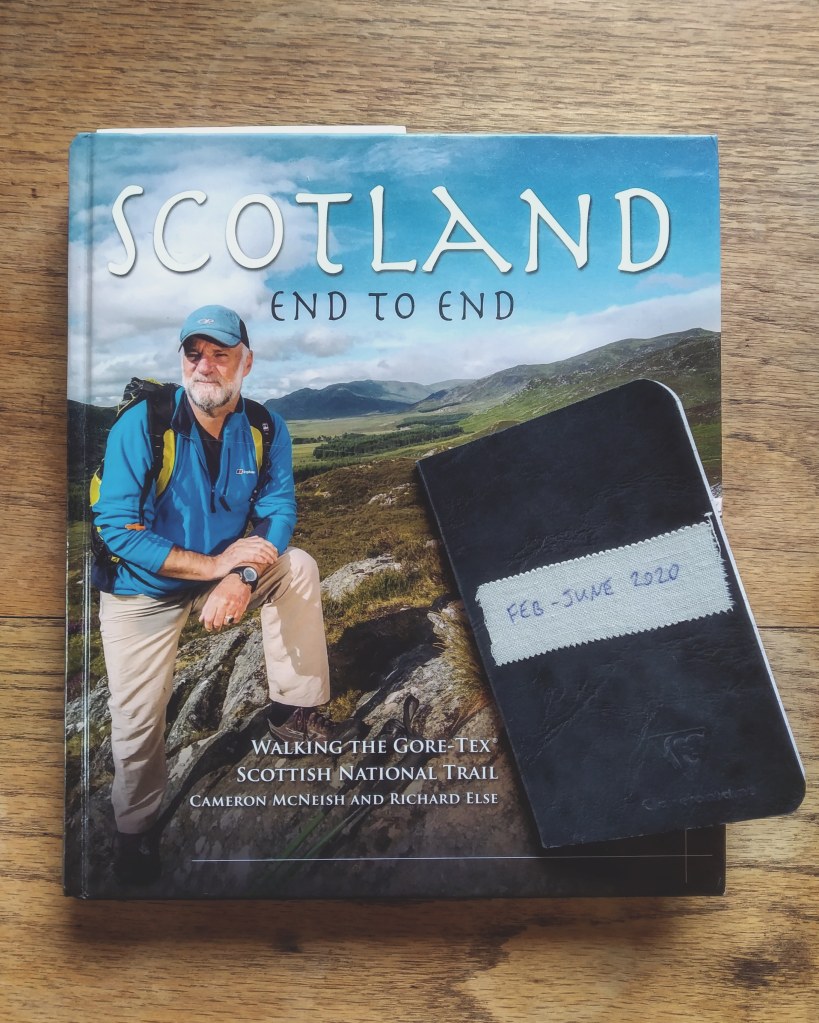
I figured I’d wait till the weather improved and they let us “oot the hoose”, and see how much of the trail I could walk in two weeks of annual leave. My research seemed to show me that the fastest it’d been done was about 18 days, so it seemed fairly clear that I couldn’t do the whole thing in 14. Maybe I should just take three weeks and enjoy it, or maybe…
I spent the next six-ish months going around in circles – wondering whether two weeks might actually be do-able, then convincing myself it was never going to work. I told very few people about it in this time, thinking I’d most likely come to my senses and back out. This became my big hairy audacious goal of the year, and I’d probably never get around to actually attempting it, but I figured I may as well start testing the waters.
Training
I’d been building up the mileage since the start of the year after a bone stress injury in late-2019, but I guess I really started experimenting in April. This gave me a total of about five months of training by the time I finally got a window of opportunity in September. My philosophy was simple – forget about speed and focus on:
- Mileage – anywhere between 50 and 120 km per week. At the peak this meant sometimes running twice a day, up to 10 runs a week.
- Vert – I tried to get at least 1,000 metres of elevation gain per week, sometimes up to 3,000. Edinburgh has some nice hills, but I really had to go out of my way with at least a couple of dedicated hilly trail sessions per week.
- Time on feet – because pace wasn’t important, it meant I could “count” long weekend walks/hikes in my mileage, not just running. This flexibility kept things fun, not just making me a slave to a schedule. Besides, on the trail I did a lot more walking than running.
- Specificity – I did my best to simulate aspects of life on the trail, including weighting my pack with cans of baked beans for some of my runs, and testing out my gear on overnight trips in the hills.
- Strength – for the first time I actually built some strength and conditioning exercises into my schedule, doing simple leg and core sessions once or twice a week.
Until August I largely focused on training for a conveniently timed Bob Graham Round attempt with friends, which called for a very similar style of training and fitness. Somehow we pulled that off, which (for better or worse) gave me just enough confidence to have a crack at the National Trail. Summer was fading quickly and my birthday is typically in late September, so that seemed like the perfect window of opportunity.
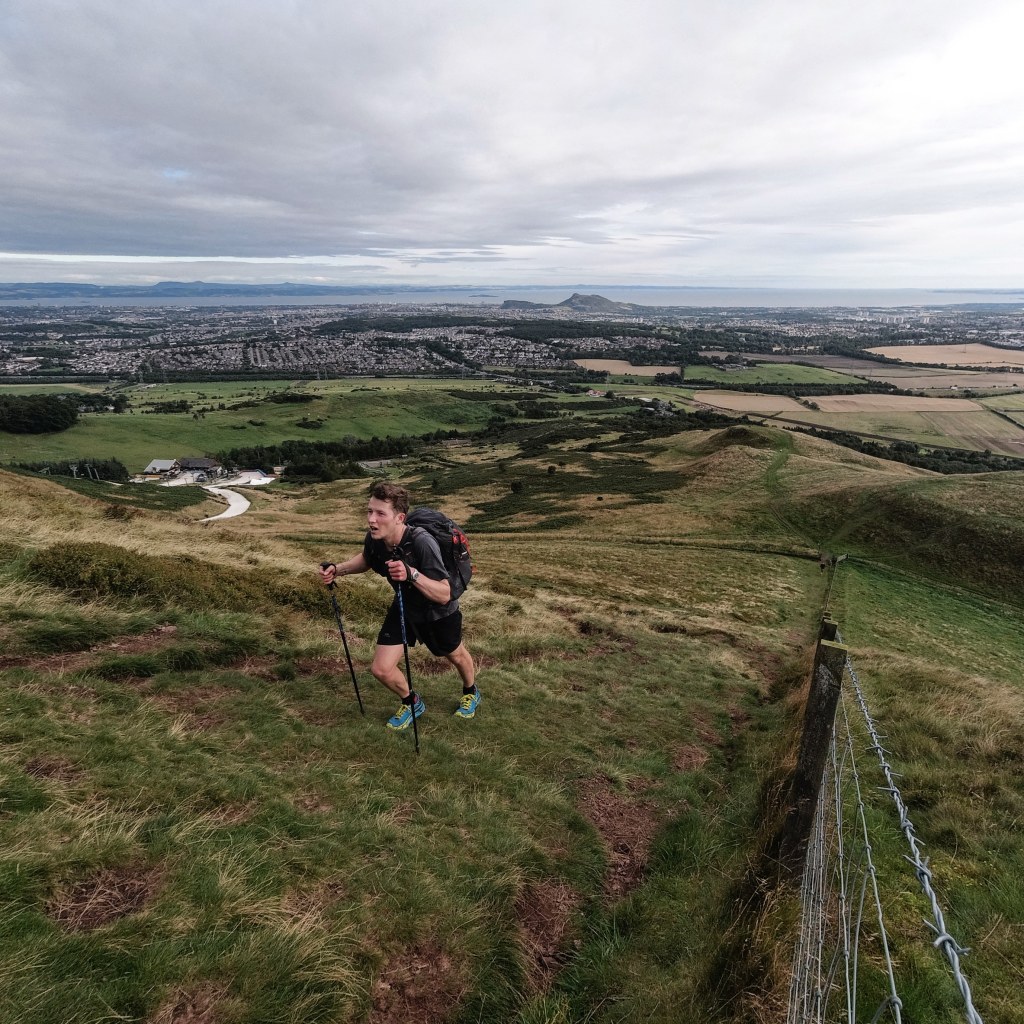
Timing and the FKT
FKTs (Fastest Known Times) are growing in popularity as a way for runners and hikers to test themselves on popular routes in their own time and in their own style. They are recorded in terms of total elapsed time on a trail/route – i.e. the clock keeps ticking whether you’re running, eating, sleeping or popping blisters in a town square on a busy day.
I tracked my journey with a SPOT GPS tracker – you can see my data here (click “load limited data” and scroll through the dates). This proved to be a great way for friends, family and curious strangers to follow me in real time, even when I lost cellphone reception (I’ve heard multiple accounts of people staying up late “watching” me reach the lighthouse, some even crying when I got there!).
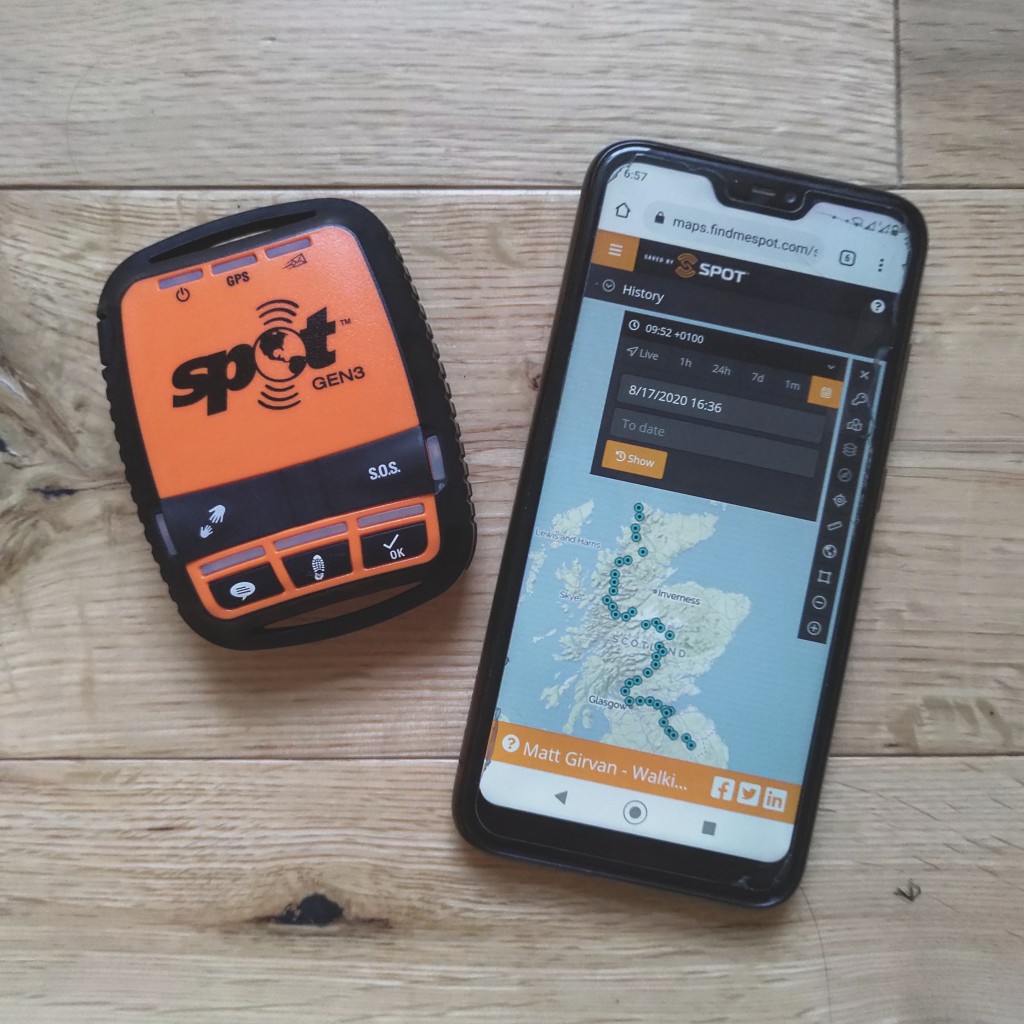
Only a small number of people have walked the entire trail in one push, and barely a handful of those have set out to do it “fast”. The fastest previous times I’m aware of are:
- 4 days, 4 hours, 20 mins – Team Pyllon ran it as a supported team relay in winter conditions in January 2020 (unclear whether it was 100 hrs 20 mins or 102 hrs 20 mins). A relay is very different to a continuous solo trip, but either way this is a mind-blowing effort, especially in winter.
- 18 days – prolific Edinburgh runner Graham Nash ran it solo, supported, in May 2015, so this was the time to beat. I got in touch with Graham before the trip and he became a mentor and friend. I owe him a great deal of thanks for his advice and encouragement before, during and after the trip (including a bottle of single malt when I beat his time!).
My original target was 15 days, based as much on the convenience of two weeks of annual leave as it was on my physical abilities. I was elated to finish a day early in just under 14 days.
- Start: the Border Hotel, Kirk Yetholm, 5:34am on Friday 11 September 2020
- Finish: the Cape Wrath Lighthouse, 1:09am on Friday 25 September 2020
- Total elapsed time: 13 days, 19 hours, 35 minutes. Verified on fastestknowntime.com as a new self-supported and overall solo FKT
Can this time be beaten? Absolutely. Graham and I both believe the right ultra runner could take it well under 10 days with a support crew and thorough planning. As for self-supported, I’m sure it could be beaten by a few days, but I’m satisfied that it will take a certain type of person really putting it all out there. It will be interesting to see whether the trail, and the FKT, hold enough appeal to attract elites.
Route and Schedule
The Scottish National Trail isn’t a well-trodden, continuous, waymarked path. It links up sections of iconic trails like St Cuthbert’s Way, the West Highland Way and the Cape Wrath Trail. Some of these are busy and well marked (WHW), others include sections of pathless bog (CWT). Overall it’s probably about 10% road link-ups, 9% hard/flat/boring canal towpath (urgh!), and the rest is mostly singletrack and 4WD track.
I did my best to follow the route documented on walkhighlands (which has changed slightly since McNeish’s original book), though I needed to take some minor detours, for example around a canal burst near Falkirk. Whenever I strayed from the main route to get to additional towns (e.g. Kilsyth, Newtonmore) I made sure I rejoined the trail where I left it.
The trail isn’t overly hilly or mountainous, as it mostly follows glens (valleys) rather than ridgelines. It generally starts easy (rolling hills in the Borders and canals in the Central Belt) and gets harder (hilly bogs and boggy hills in the Highlands). I set my schedule according to the difficulty, frontloading it with 68 km days at the start, easing to 60 km in the Central Highlands and then 50 km further north. The longest day I’d done before on a long trip was 50 km, so I genuinely didn’t know how my body would handle this plan!
Here’s a map of the official route (not capturing my minor detours), showing where I spent each of the 14 nights on the trail:
- Green = wild camping (8 nights)
- Blue = bothies/shelters (4 nights)
- Red = paid accommodation (2 nights)
The real nitty-gritty – my daily scheduled vs. actual mileage, approximate moving times, paces etc. Note how I managed to pull well ahead of my 50 km scheduled mileage from day 11 onwards, despite the tougher terrain of the Cape Wrath Trail. This put me in a good position to finish early with a big final day, partly just to be done with it, and partly because I was realising I could do with some extra time for the long, complicated trip back to Edinburgh.
Gear
This was a two pairs of socks, one t-shirt, no cooker sort of trip.
Keeping my gear light was the key to allowing me to move fast over long days. That said, it all had to be up to Scotland’s “four seasons in one day” vibes, and it had to be affordable. Most of what I took was stuff I already had, though I did buy a few items for the trip. I try to buy most of my gear second hand, including my shoes, tent, sleeping bag and sleeping mat – this is my number one cost and environmental impact saving tip.
The total base weight of my gear (excluding food and water) was about 7 kg. If you really want to geek out, take a look at my beautifully colour-coded gear list. Sure, you could halve that with an unlimited budget, but my pack was still among the smallest and lightest I saw on the trail (including some day walkers) and certainly didn’t hold me back.
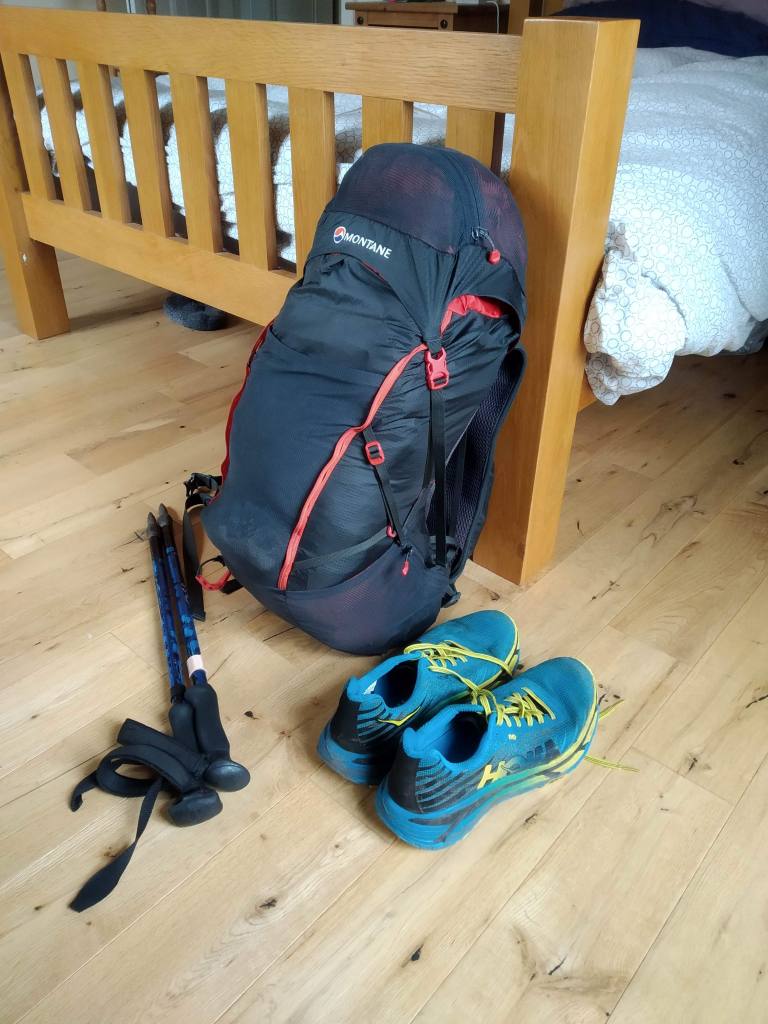
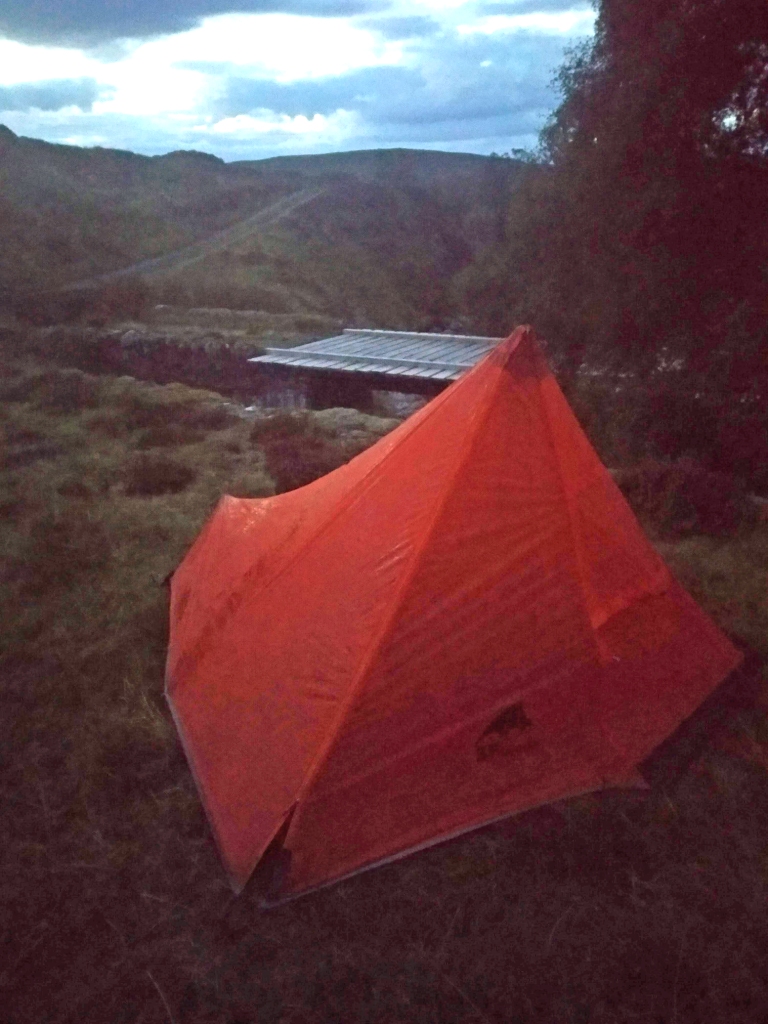
THE BEST GEAR
Pack – Montane Trailblazer 30L
Could be lighter (840 grams), but it was comfy, the perfect size and full of handy pockets.
Tent – 3F Ultralight 1 person
760 grams of bright orange plastic. It’s slowly falling apart, but this thing has got me through all sorts of weather all over Europe.
Poles – Manfrotto OFFROAD
I’m a massive convert to hiking poles, especially when they double as your tent pole and camera monopod…
Camera – DJI Osmo Action
Tiny, waterproof and epic stabilisation. I had a lot of fun getting creative with this epic little tool.
THE WORST GEAR
Shoes – Hoka EVO Mafate
These things came pretty close to derailing my trip… Super grippy, rugged and cushy, but I really underestimated how much my feet would swell after a 14+ hour day. I’m sure these would be perfect for some people, but the funnel-shaped toebox turned my wide hobbit feet into a couple of blistery messes.
Socks – Salomon Merino Walking Socks Low
Gaping holes about 10 days in didn’t help my blister situation. Maybe these were actually just cheap knock-offs by Sports Direct??
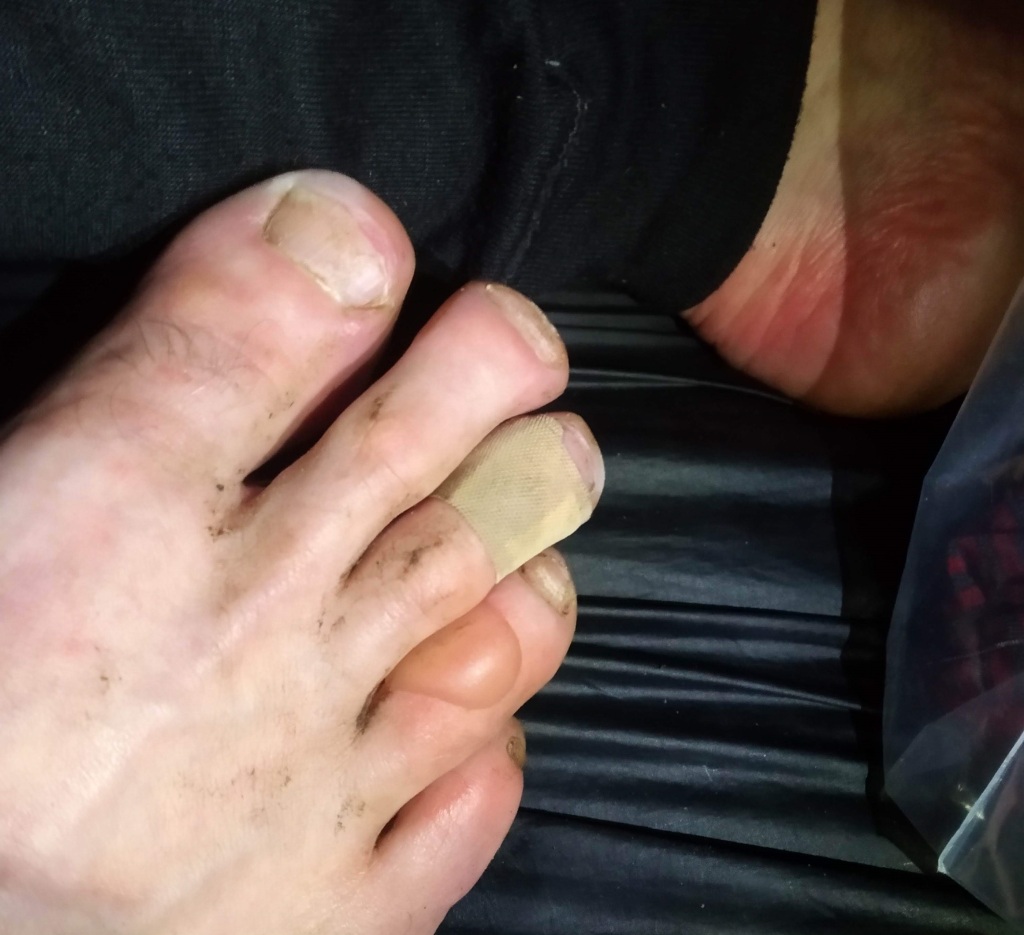
Logistics and (lack of) Support
I chose to do this trip in the solo ‘self-supported’ style, which basically means I could buy food and accommodation along the way, but couldn’t have any pre-arranged supporters bringing me gear/food/water. I wanted it to be a raw, simple, largely solo experience, without anybody being inconvenienced if I blew up on day 2. This also means that my time will still stand as a self-supported FKT if someone beats it in a ‘supported’ style (with a crew).
There were a few occasions when friends (and one total stranger) used my GPS tracker to surprise me on the trail. It was a huge emotional boost to see a familiar face, but I was careful not to accept any food, gear or company along the trail. I even went as far as camping on the back lawn of a Scout hall on the outskirts of Edinburgh, only a few kilometres from my flat, as spending a night at home could be seen as support which other hikers wouldn’t have access to.

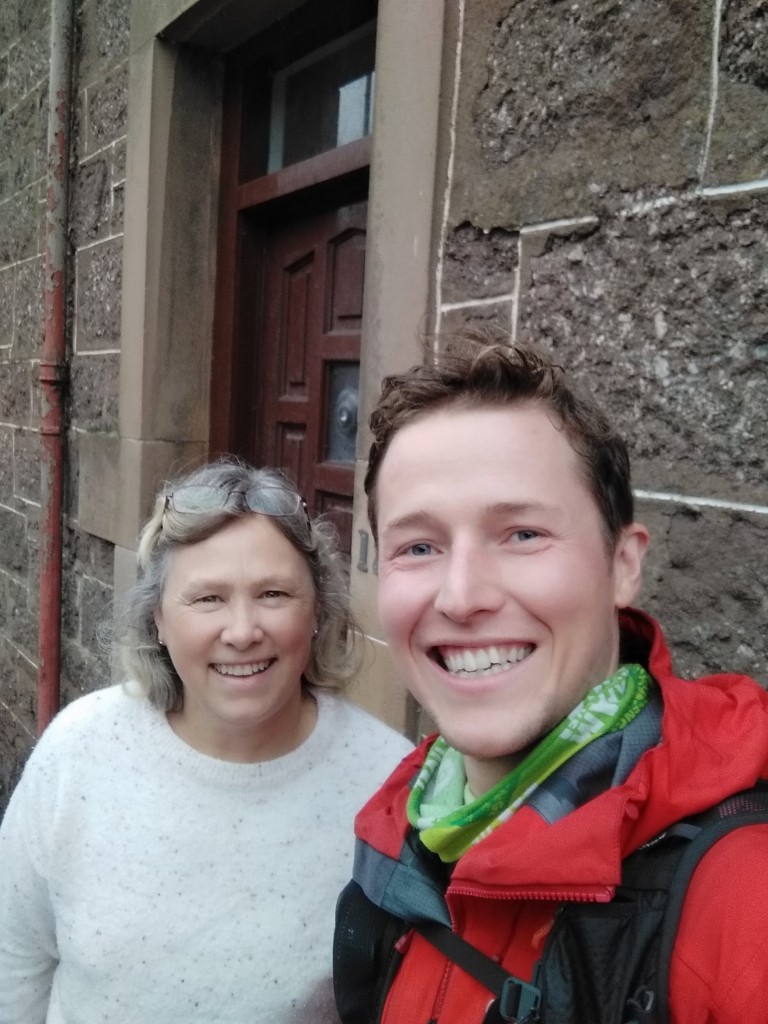
There were a couple of times when I accepted unplanned snacks and boosts of charge for my phone/camera from strangers, which is generally allowed within the self-supported ethos. The lack of facilities and accommodation on the Cape Wrath Trail made it a real challenge to keep my phone and camera charged – my phone (my main source of navigation) was down to 5% battery when I finally reached the lighthouse.
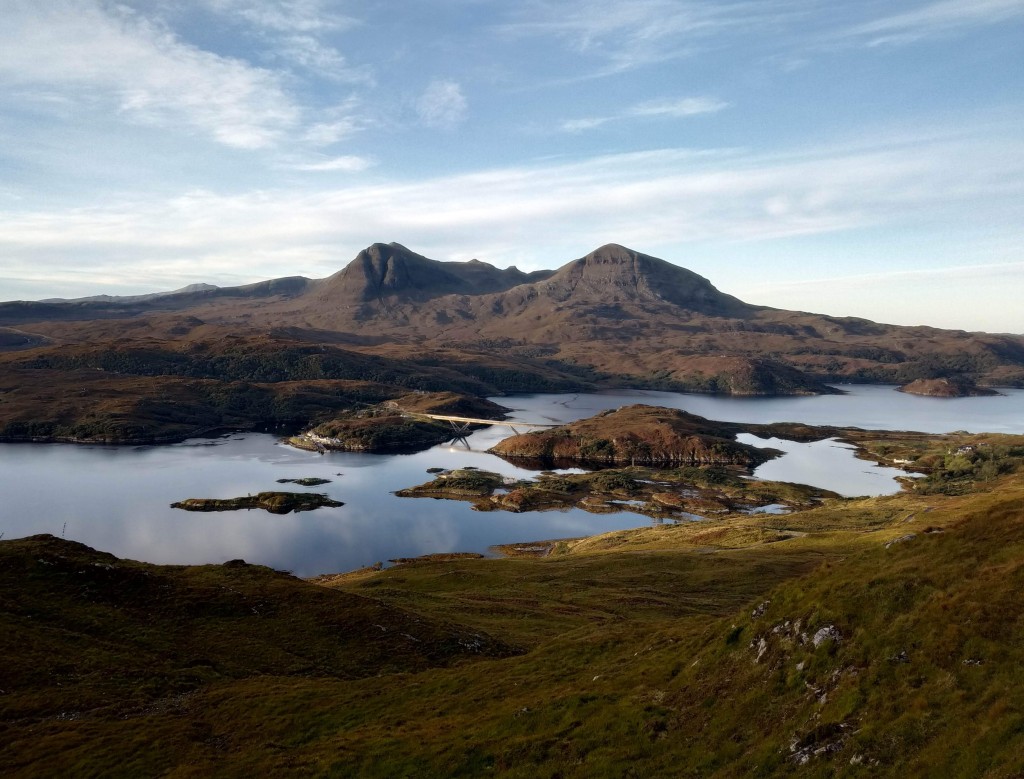
Food and Water
The trail has an abundance of fresh mountain water and towns for food supplies, making it really well suited to a fast and light adventure.
For the first week I passed by at least a couple of towns/shops/takeaways each day, so I was happy with the decision not to take a cooker (saving both precious weight and time). I was probably burning 6,000+ calories per day, so I had to be opportunistic and eat as much as I could, whenever I could.
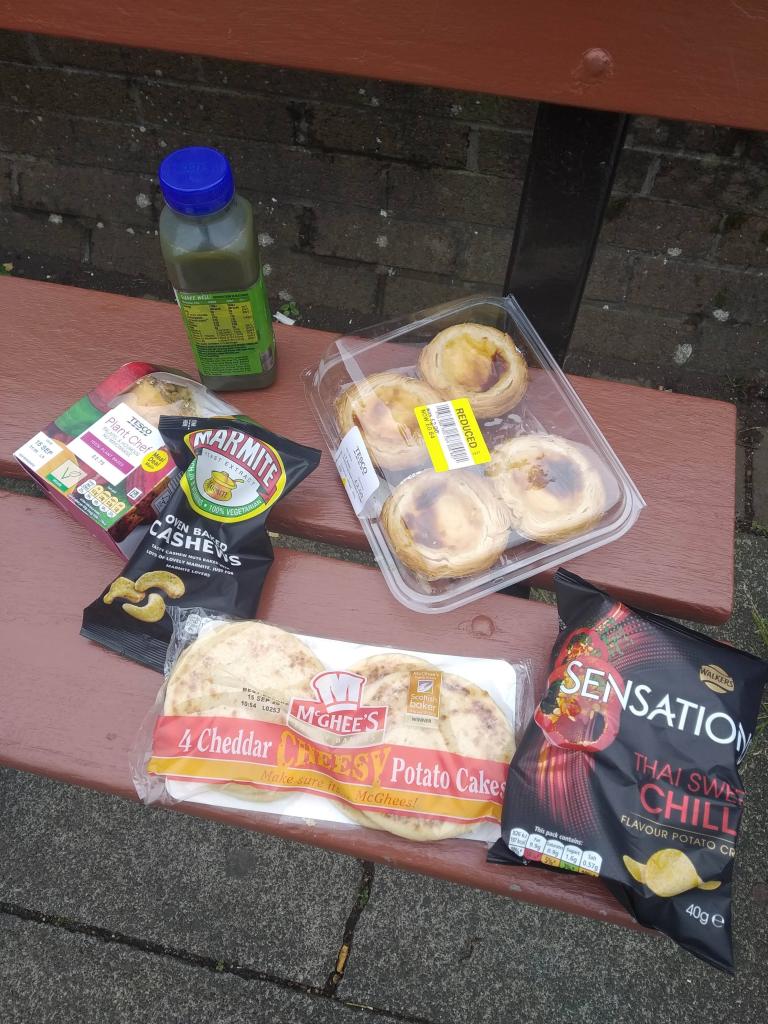
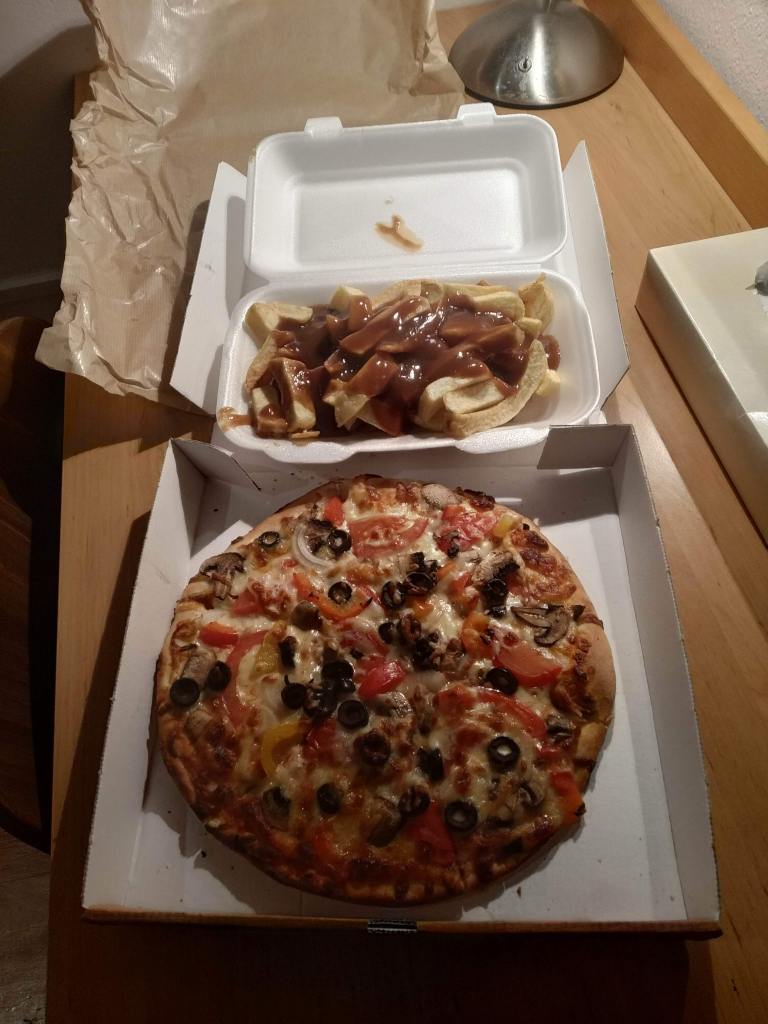
Things got a bit tricky further north – there are very few villages on the Cape Wrath Trail, so most hikers send food packages ahead to post offices or accommodation. Not wanting to commit myself to a schedule (or extra admin), I left a bit more to chance. There were two stretches when I had to carry about three days’ worth of food. I had the bare minimum of high-calorie food from small grocery stores – digestive biscuits, Doritos, chocolate, peanuts and lollies (sweets) – banking on a couple of known pubs and restaurants for big top-up meals. But I ended up passing the pubs (Cluanie and Oykel Bridge) at the wrong times, and the The Inchnadamph Hotel’s restaurant was strictly for guests-only (I probably could’ve checked that).
I got down to very strict rations by the end of these two stretches and was probably only eating about 3,000 calories a day – more than enough for normal daily life, but with long days of walking this was putting me at a huge energy deficit. Needless to say, I was elated to stumble upon the Old School House near Kinlochbervie for hot chips towards the end of my final day, having eaten my last pieces of chocolate an hour earlier.
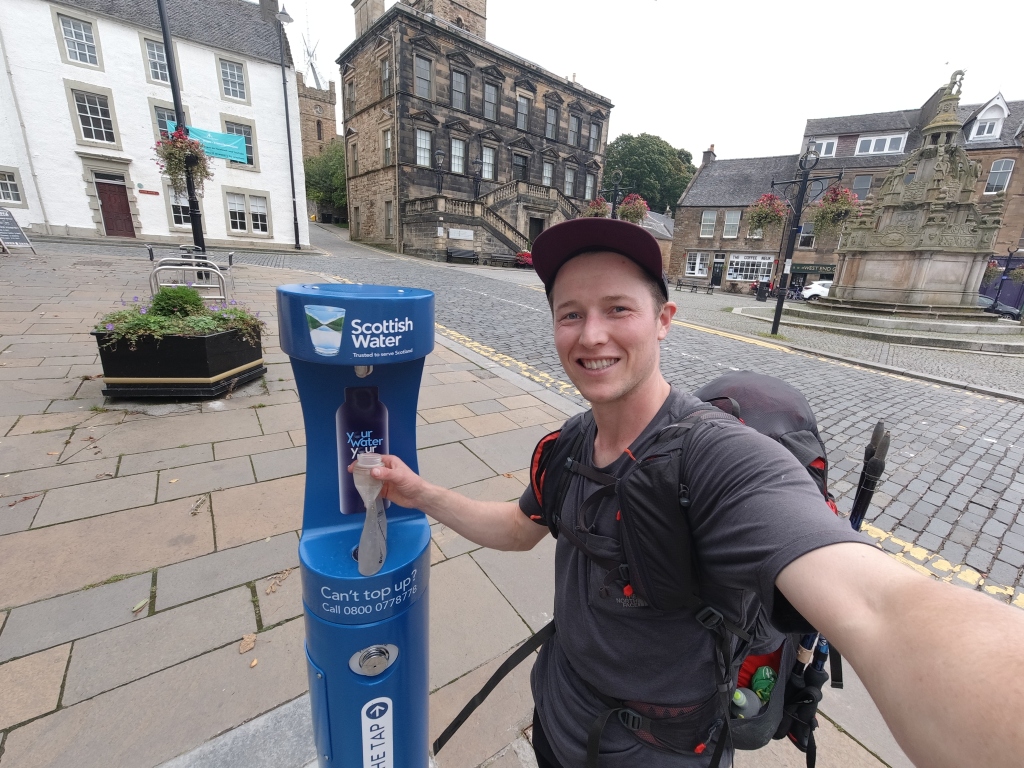
If there’s one thing that Scotland has plenty of, it’s water. In the more populous and agricultural Borders and Central Belt I largely avoided river water and topped up at cafes and public taps. Further north I had no problem finding loads of nice burns/rivers everyday, and never carried more than a litre at a time. I know some hikers use water filters in the Highlands, but I was perfectly comfortable without one (though I’ve never really used one, so my gut is probably fairly well-adapted). I was pleased to be able to walk the whole length of Scotland without ever buying bottled water.
Reflections
It was a huge relief, and surprise, to pull off what I thought was a nearly impossible goal. It’s particularly nice to have something positive come out of what’s been a real rollercoaster of a year. While I won’t be taking on anything as long or aggressive for quite some time, I know I’ll be able to draw on it for the confidence and creativity to take on other big adventures in the future.
I was completely overwhelmed by all the support I received from friends, family and total strangers – thank you all. The GPS tracker proved to be an incredible way to keep people informed and engaged. Raising over £4,300 for the great work of WaterAid also blew my expectations right out of the water, and the fundraising page is still open if you would like to contribute.
It was touching to see that the warden at the bothy in Glen Feshie (Ruigh Aiteachain, if you want to practise your Gaelic), planted a Scots pine to commemorate my trip. This was the halfway point of the trail, and one of many places I hope to revisit soon.
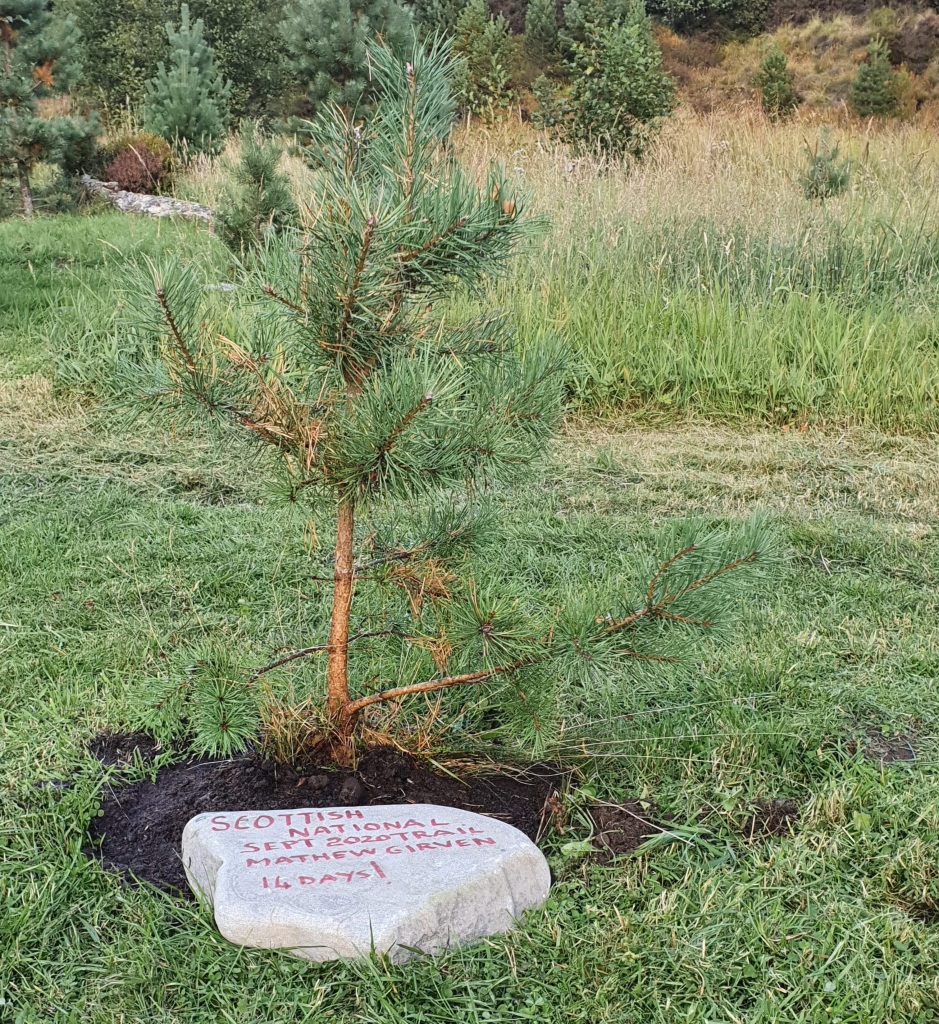
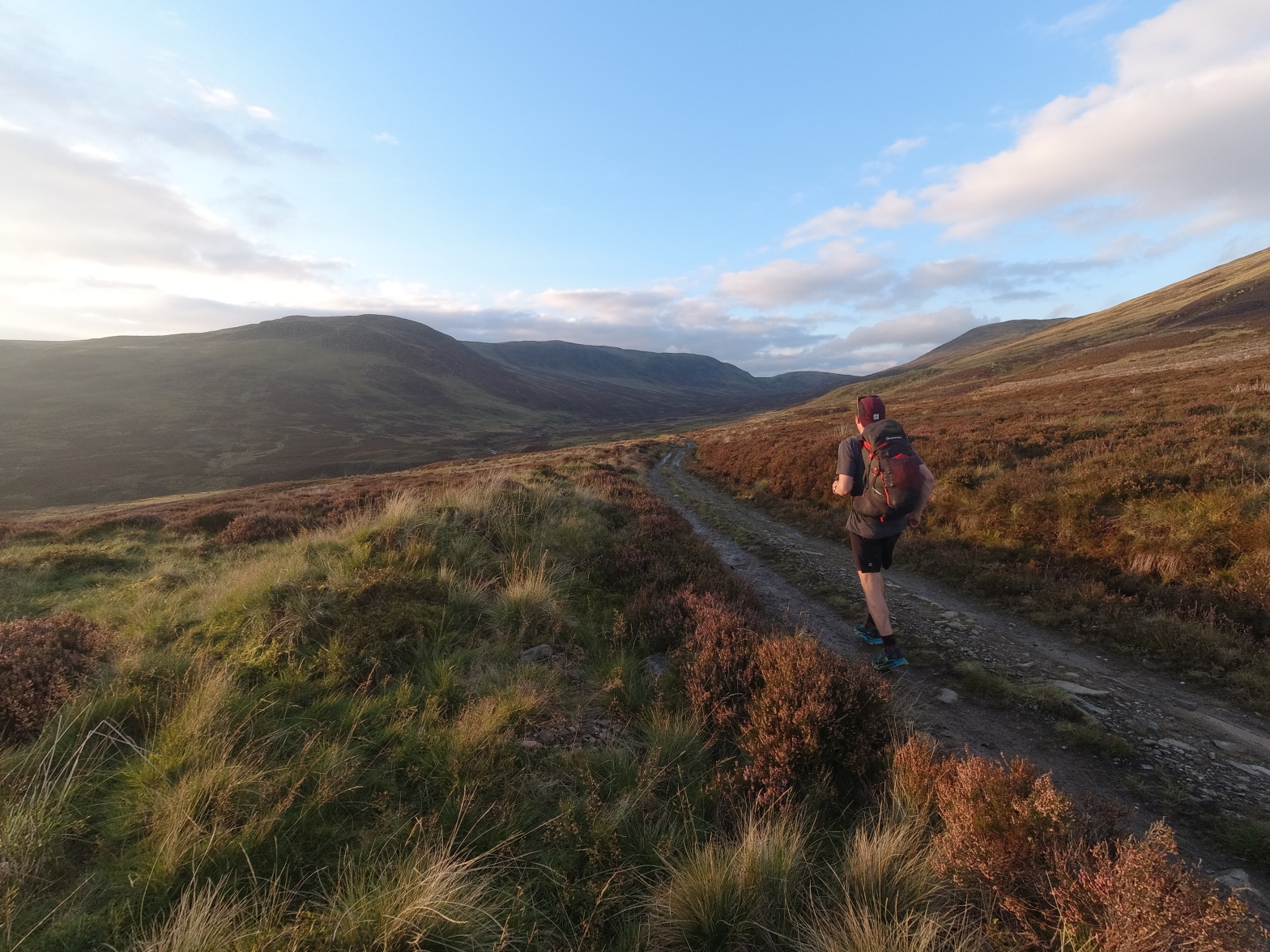
Just watched your video on YouTube – what a legend & inspiration you are. Thank you for taking us with you – I think we had it easy here on the sofa compared to you.
LikeLike
Wow thanks Bill, appreciate your comment and glad you liked the film! It’s been a cool way to share the trip with other people. And don’t worry – I thoroughly enjoyed some time on the sofa after this trip!
LikeLike
Some random & mildly irrelevant questions for you:
Q. You seem to have settled-in on this side of the planet, but what made a Kiwi choose little old Scotland to look for “work and adventure”? Welcome! You’re officially ‘adopted’.
Q. An 864km hike the length of Scotland in 14days “seemed like the perfect way to see the country”!? I guess it must’ve been a bit of a “blur” but one you’ll remember for the rest of your life. What’s next?
Q. Presumably your 50gram ‘knock-off’ socks were more like 30grams by the time you reached Day10, but what did you do? No darning needle & wool in your pack & no sock-shops in the Highlands – presumably you just persevered & suffered with them to the end? Are they now framed & on the wall as a memento of an epic adventure?
Q. You’re vegetarian right? Was the chips & gravy a little necessary indulgence for the calorific boost needed?
Q. How does that SPOT GPS tracker update your location every 10mins in the Highlands with no mobile phone signal for miles? Presumably it uplinks direct to overhead satellites, but doesn’t that mean you have to strap it to your head to ensure it can upload?
If you’re ever back at The Old School House near Kinlochbervie long enough, they do an excellent breakfast – you’re welcome to breakfast on me. Sláinte!
(keep practicing your Proclaimers accent!)
LikeLike
Hi Bill, great questions and apologies for the slow reply!
1) Thanks, nice to know I fit in! I will gladly accept the adoption, haha. It’s a bit of a tradition for young Kiwis to come to the UK for a while to live, work and travel – normally basing themselves in London and normally for the length of a Youth Mobility Visa (two years). I wanted most of that experience but in a smaller city with better access to the outdoors, and after travelling around a bit in 2019 it seemed that Edinburgh offered the right balance for me. And it hasn’t let me down! I also have ancestry from the Glasgow area, which gives me a nice distant family connection and access to a longer visa.
2) Absolutely, it was quite the whistle-stop tour of Scotland. Despite the rapid pace, I have so many fond memories of the places I passed through and the people I met along the way. As for what’s next… I’m making the most of there being a lot of events back on the calendar, so I’ve got a full summer of utlra races ahead. Then hopefully time for some more self-motivated adventures at the end of the summer!
3) Ahh the socks… Yeah the definitely shed a bit of weight! I did pick up an extra pair in Pitlochry but they weren’t much better, I just had to grin and bear it. Believe it or not I actually took the holey ones back to the shop and got my money back – I think we need to expect good quality from our gear!
4) Yeah I’m vegetarian, though I’m not particularly strict about it. The gravy actually never occurred to me – these days it’s often made from Bisto stock (vegetarian) rather than actual meat dripping. But I’ll keep it in mind in the future! I never seem to have trouble getting the energy/nutrients I need.
5) Yeah the Spot tracker links up directly with satellites, so it doesn’t rely on phone reception. And yes, you have to keep it near the top – I had it in a mesh pocket at the very top of my pack. The battery life was great but it did lose communication for an hour or two here and there without me knowing.
Thanks very much, I’ll let you know if I’m ever back up Kinlochbervie way! I actually stopped by the Old School House for chips and cake on my very last day – it was a very happy moment after three days of rationing my food. And yup, I’ll keep working on the accent haha.
LikeLike